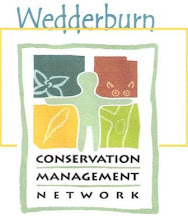A CMN is a network of sites with native vegetation. A CMN is also a network of people who work together to protect and restore these sites, and also work to expand and link them across the landscape. Members of a CMN include interested private landholders, managers of remnant vegetation on public land, and other interested community members.The people in a CMN focus on a local ecological community – or a group of plants and animals that coexist in nature – such as rainforest, native grassland or woodland. Members work to protect threatened species like the endangered Bush Stonecurlew, Striped Legless Lizard, Malleefowl, and the vulnerable Powerful Owl.
Australia is one of the most biologically diverse countries in the world. Most of our native plants and animals only occur here, and many of these are found on private land.CMNs are busy on both public and private land with site-based activities like revegetation, and addressing landscape-wide problems like tree die-back, weeds and foxes. Community education is also an important CMN activity. The community has a strong say in deciding the activities of the CMN.
CMNs work closely with local Landcare, government agencies and nongovernment organizations.
Nature doesn’t know the difference between public and privately-owned land, so conserving biodiversity needs cooperation between private landholders, public agencies and the broader community. In Australia, Conservation Management Networks (CMNs) have been used since the mid-1990s as an effective way to bring these groups together.
This description of CMN`s has been quoted from the Department of Sustainability and Environment, Victoria, Australia.
Subscribe to:
Post Comments (Atom)

No comments:
Post a Comment